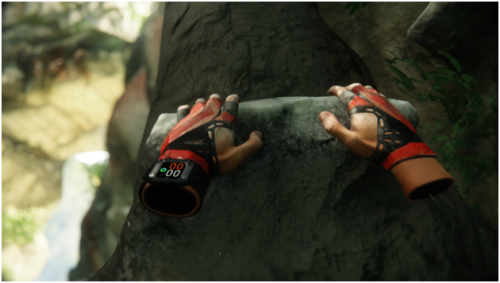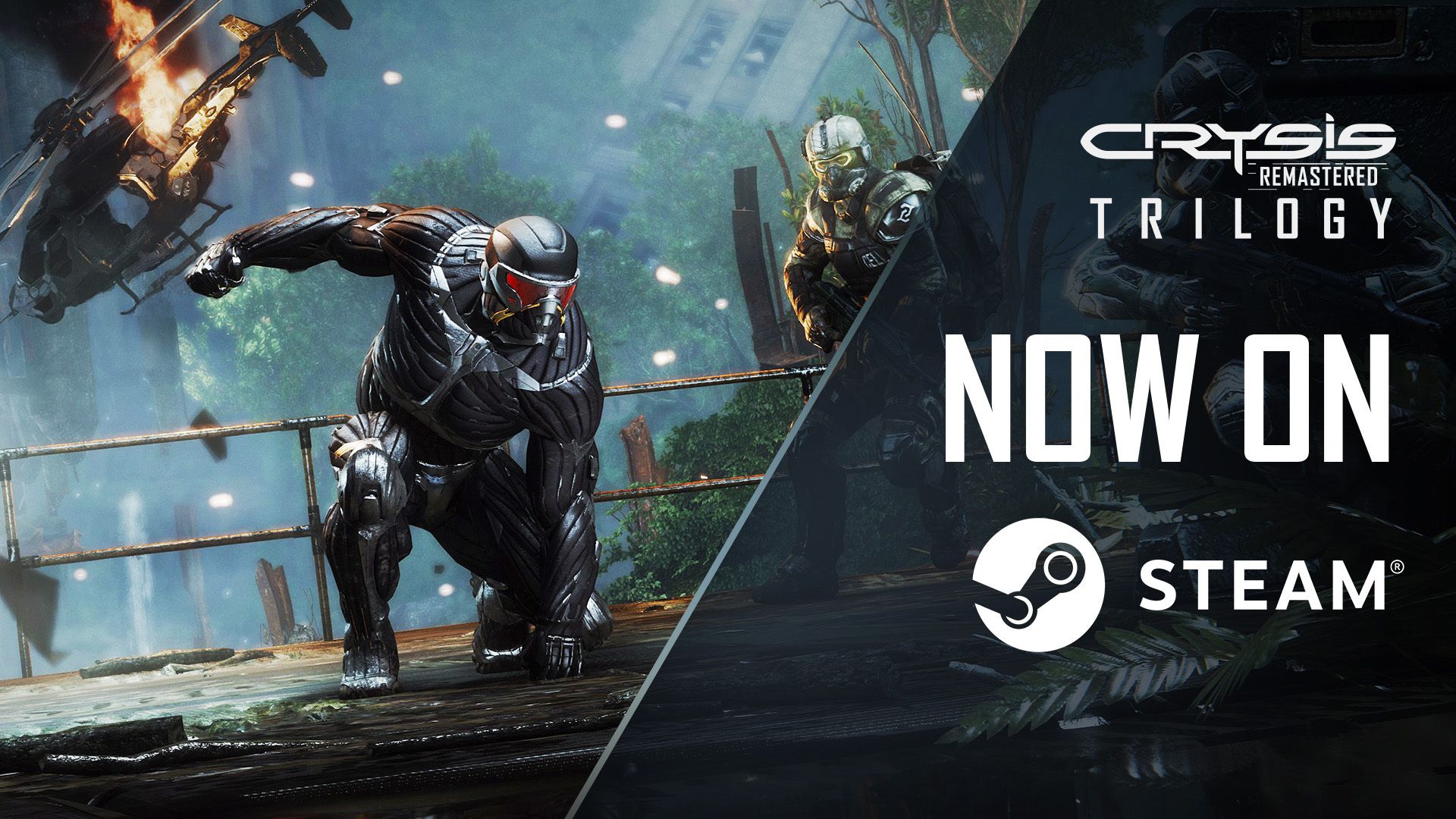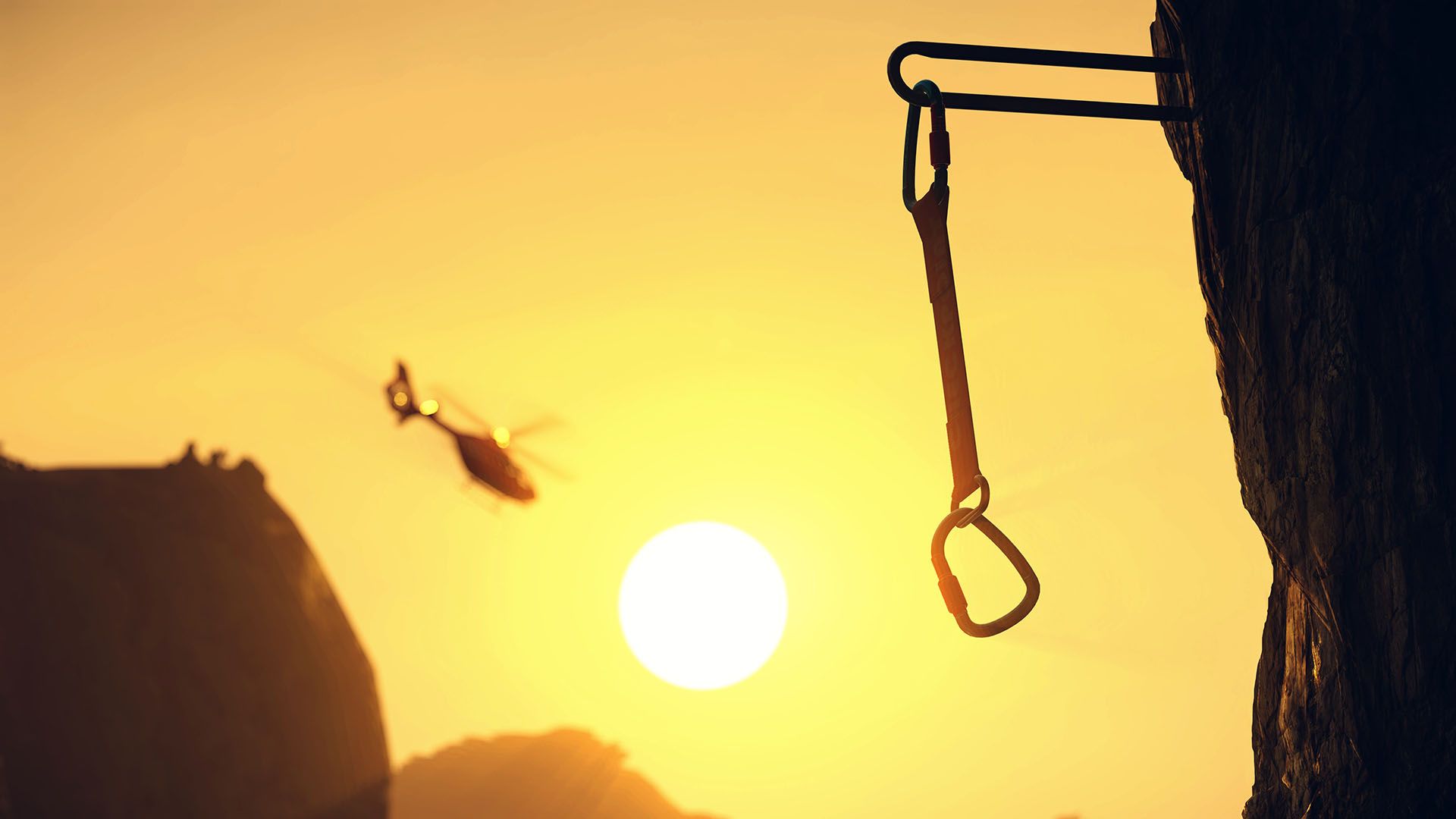
What, no arms? Why you climb with your hands in The Climb
By Fatih Özbayram, Lead Producer
One of the questions we’re asked the most about The Climb is why you only see and use hands to climb. It’s easy to understand when you play, as it feels intuitively right and the visual experience is different in the VR environment. In fact, because of the detail in which the hands are rendered and animated, and the way your eyes are drawn to where you want to go, you don’t really think of the arms as ‘floating’ but more as a natural extension of the physical actions you perform. However, when you look at 2D media and you’ve not had the experience of playing the game, it can look unusual and not really what you’d expect. So let’s look at how we came to our ‘hands only’ mechanic.

When we began production on The Climb, rendering a full body for player actions was something we instinctively looked at. But as with many aspects of developing for VR – a brand new medium – many of the usual approaches that you’d take in traditional game development don’t work in the way that you’d expect, or even apply at all.
VR is primarily such an exciting field because of the incredible immersion it gives the player. When your brain sees a character’s displayed arm in the game when you climb, it needs to be as it expects, or presence is broken. That’s because scale in VR is immediate – the inevitable difference between a single character’s arms as rendered in the game world and the player’s own arms in reality causes problems. The deviance between the digital and the physical radically affects immersion.
For instance, the head tracking technology in a VR headset can accurately map where your head is, so when you look around, it feels like ‘you’ are looking around. It’s that accuracy that makes it work – the visual inputs you receive are exactly what your brain expects. For a comfortable climbing experience, arms would need to be precisely rendered to the size of each individual’s arm size. Why? It’s because if you’re facing the wall, then you see ‘your’ arm reach out for the next grip but it is longer than your own, at best it looks and feels unusual, breaking immersion, because the movements and sizing deviate from what your brain anticipates. At worst, it can induce discomfort and motion sickness. It’s not consistent with what the brain expects. When we render hands only instead, the movements you perform become much more natural, and physical discomfort is eliminated.

There are vital gameplay reasons why we render hands only too. If, in theory, you could replicate everyone’s arm length realistically in the game, via scanning from extra hardware or perhaps more clumsily by providing sliders for players to enter their own measurements, it unbalances the game. You could solve the discomfort and immersion factor, but people with a longer reach might have an advantage over people with a shorter arm span in certain circumstances, or even the opposite depending on the route in front of them, and that causes a problem for the competitive elements of the game. After all, The Climb is a sports game and needs to be a level playing field.
Not having arms also helps with gameplay in different ways. For instance, rendering arms – and indeed, a full body – obstructs your view. When climbing downwards, it’s particularly intrusive. You can’t see routes as clearly – or indeed, take in the view – as more of the visual real estate is taken up with arms and the body. It makes playing harder and less visually satisfying than it should be.
By eliminating the body and arms, you also do not have legs and feet. In real life climbing, legwork and foot placement is important but with legs – and indeed the entire body – rendered into the game you encounter the scale problem again. Your own body and leg dimensions may deviate from what’s displayed, causing discomfort. But adding in feet also adds another layer of complexity, requiring another layer of inputs to control them that goes against the sense of immersion and flow that we want players to feel. So far, we’ve found that less is more when it comes to button inputs when climbing in VR – and we want complexity in the gameplay, not complexity in playing the game. We want you thinking about your routes and getting into a flow, rather than slowing gameplay down as you double the number of appendages you have to control to perform each movement.

Out of all the variations we prototyped and tested, just having hands in the game was the most satisfying, the most immersive and the most instinctive. It eliminates issues of motion sickness, makes exploring rock faces and the environment easier, keeps your immersion consistent and allows us to present more balanced gameplay. The hands might look a little strange in 2D, but in VR, they quickly feel natural to the point where you don’t really think about them as being disconnected. Instead, you just think about what you’re doing and where you’re going.



